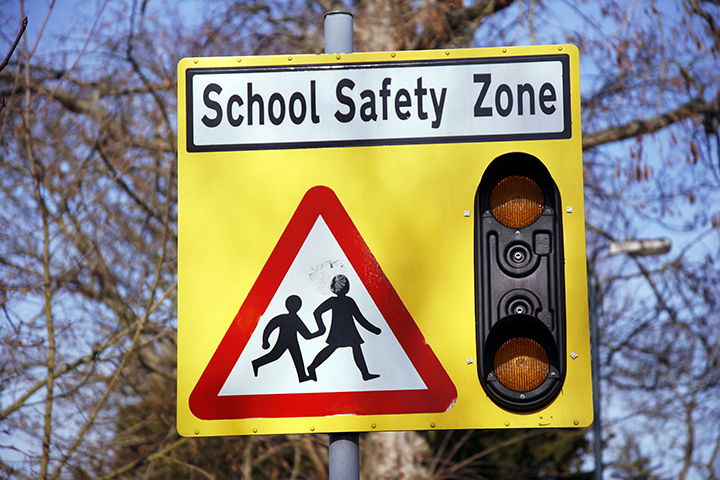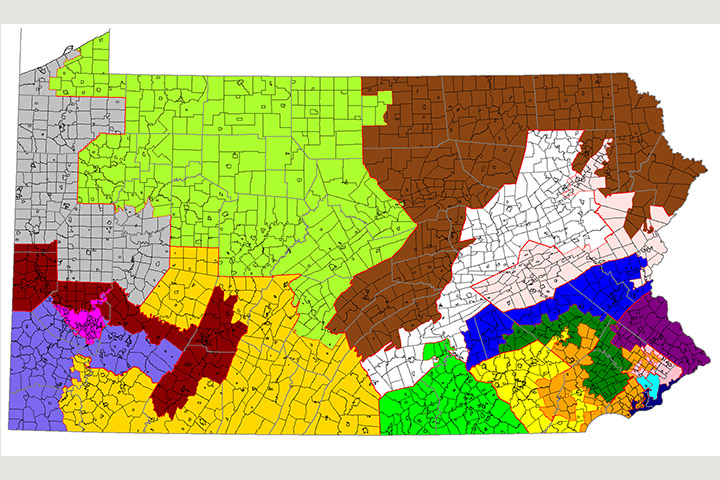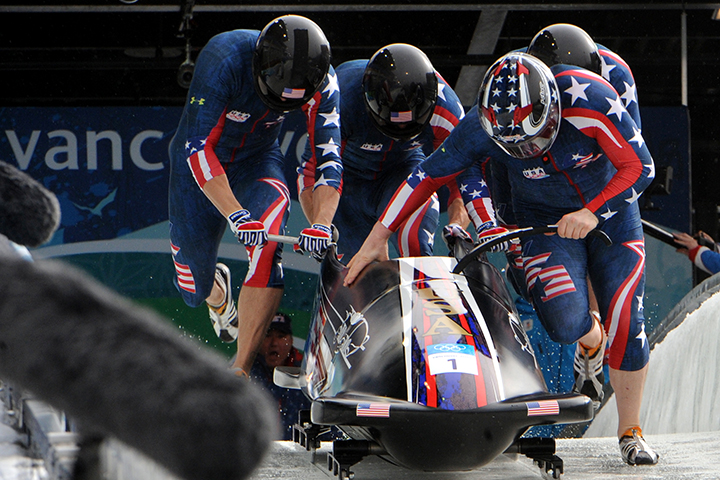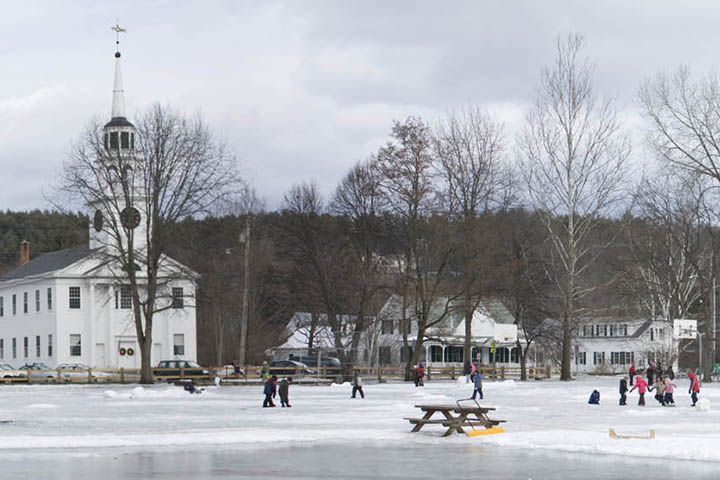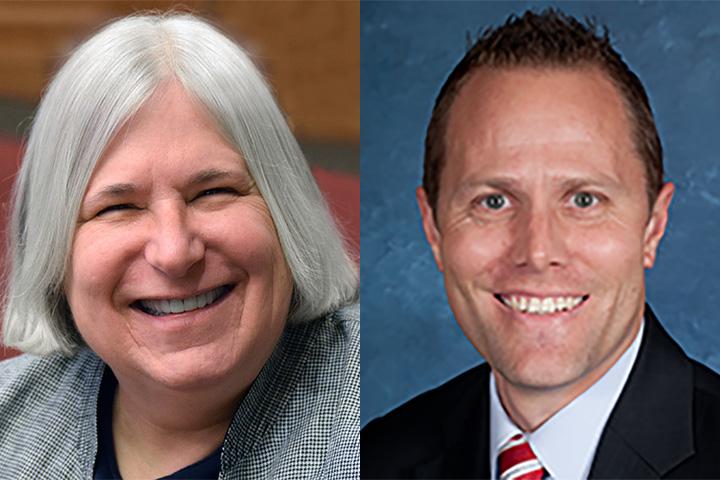Penultimate version, forthcoming in Routledge Handbook of Moral Epistemology, eds. A. Zimmerman, K. Jones and M. Timmons.
Abstract
Can virtue be taught? The question is a controversial one, harking back to Confucianism and the Platonic dialogues. We assume that virtue can be taught in the sense that teachers can influence character development in their students and explore the challenges and opportunities of teaching virtue from a variety of perspectives. In part I, Nancy E. Snow surveys a number of theoretical perspectives on teaching virtue which have been or are being implemented in schools. Scott Beck, the principal of Norman High School, describes in part II the grassroots approach to character development recently initiated at his institution. In part III we discuss how features of the Norman High initiative illustrate aspects of the approaches discussed in part I, and conclude with general observations about roles for askesis, or disciplined practice, in changing school communities and cultivating character.
Introduction
The title of this chapter raises questions for anyone familiar with the history of philosophy. It brings to mind Plato’s dialogue, the Protagoras, in which Socrates asserts that virtue cannot be taught, thereby opposing the opinion of his interlocutor, the famous Sophist, Protagoras. Socrates believes that virtue cannot be taught because it is wisdom and no one can teach wisdom. Yet the notion that virtue cannot be taught is at odds with other views from the history of philosophy: Plato himself outlines a regimen for character development in the Republic; the Confucian tradition offers advice on the cultivation of the junzi, or excellent person; Aristotle argues in the Nicomachean Ethics that virtue is acquired through guided habituation; Rousseau writes notoriously of the different types of character formation needed for girls and boys in Emile, and John Dewey wrote of education, including character education, in the tradition of classical American pragmatism.[i]
So which is it? Can virtue be taught or not? Exactly what one is teaching when one “teaches” virtue matters to the question of whether virtue can be taught. When one is “teaching” virtue, one is surely not teaching a subject matter like mathematics, grammar, or literature. Even when one is teaching theories of virtue, one is not yet “teaching” virtue; though one could be contributing to character development in some respects. One could do this, for example, by making students aware of theoretical thinking about the nature of virtue, what constitutes virtue, what constitutes vice, and so on. When one is “teaching” virtue in the full, robust sense under discussion in the Protagoras and the previously mentioned texts from the history of philosophy, one is forming character. One is not simply imparting theory or a subject matter, but changing lives. In this chapter, we assume that virtue can be taught in the sense that teachers can influence character development in their students. The question is, “How should this be done?” We take as our focus teaching virtue in schools. (For perspectives on moral learning more generally, see Chapter 3, “Moral Learning” and Chapter 6, “Moral Development in Humans.”)
We explore the challenges and opportunities of teaching virtue from a variety of perspectives. In part I, Nancy E. Snow surveys a number of theoretical perspectives on teaching virtue which have been or are being implemented in schools. She concludes the section by identifying commonalities among the approaches. Commonalities notwithstanding, we recognize the value of differences. Our view is that there is no “one size fits all” with respect to virtue education. In this spirit, Scott Beck, the principal of Norman High School, describes in part II the unique grassroots approach to character development recently initiated at his institution. In part III we discuss how features of the Norman High initiative illustrate aspects of the approaches discussed in part I, and conclude with general observations about roles for askesis, or disciplined practice, in changing school communities and cultivating character.
I. Theoretical Perspectives on Teaching Virtue
A number of theoretical perspectives on teaching virtue (or closely related constructs, in the case of Social Emotional Learning) are prominent on the contemporary scene. Here I can discuss only a few: Social Emotional Learning (SEL) Integrative Ethical Education (IEE), caring, positive education, and Aristotelian character education. Educators encountering this array of perspectives might be puzzled about how to choose which outlook to integrate into their schools and classrooms. On the face of it, the various approaches appear to be discrete and unconnected, like cafeteria menu items. Yet each theory embraces a core value or set of values that teaching virtue is thought to promote, and prescribes a set of practices meant to develop virtue and thereby, the core value or set, in students. Awareness of this value/practice structure, I suggest, can help educators more easily to identify commonalities and differences and thereby make the array of options seem a bit less daunting.
Social and Emotional Learning (SEL). SEL has been on the scene of elementary and high school education for more than twenty years. SEL programs now operate in thousands of schools across the United States and in other countries, and more than 500 evaluations of various types of SEL programs have been used.[ii] The Collaborative for Academic, Social, and Emotional Learning (CASEL) was established twenty-one years ago.[iii] It “. . . aspires to establish a unifying pre-school through high school framework based on a coordinated set of evidence-based practices for enhancing the social-emotional-cognitive development and academic performance of all students.” [iv] SEL programming aims to develop students’ capacities to “. . . integrate cognition, affect, and behavior to deal effectively [with] daily tasks and challenges.”[v] SEL seeks to develop competences in five key domains: self-awareness, self-management, social awareness, relationship skills, and responsible decision-making.[vi]
Self-awareness involves understanding one’s goals and values, accurately assessing one’s strengths and weaknesses, having positive mindsets and well-grounded senses of optimism and self-efficacy. High levels of self-awareness include an understanding of interconnections among thoughts, feelings, and actions. Self-management requires skills and attitudes needed to regulate emotions and behavior, including the abilities to control impulses, to delay gratification, to manage stress, and to persevere through challenges. Social awareness includes the abilities to take the perspectives of those from different cultures or with different backgrounds, to empathize and to feel compassion, to understand social norms, and to recognize family, school, and community support systems. Relationship skills include clearness in communicating, active listening, the abilities to cooperate, to resist inappropriate social pressure, to take constructive approaches to conflict, and to seek help when necessary. Finally, responsible decision-making requires the ability to consider ethical standards, safety concerns, behavioral norms for risky behaviors, to evaluate consequences realistically, and to take one’s own health and well-being as well as those of others into consideration.[vii]
Though SEL does not explicitly teach virtue or claim to do so, it is clearly relevant to character education. Its integration of cognition, affect, and action clearly resonates with key aspects of virtue, as do the five domains it identifies as crucial foci for healthy development. Moreover, there are significant areas of overlap between SEL and the other approaches surveyed here. For example, SEL’s emphasis on cognition meshes well with IEE’s concern with cognitive development; its focus on emotional development coheres with the aims of the “Making Caring Common” project; its stress on positive mindsets and optimism coheres with Positive Education’s approach; and its integration of cognition, affect, and action, coupled with its emphasis on the social dimensions of behavior, resonate strongly with Aristotelian Character Education. Elements from these approaches could congenially be integrated into various SEL frameworks currently in use.
Integrative Ethical Education (IEE). Pioneered by the developmental psychologist Darcia Narvaez IEE combines insights from character education programs in psychology, as well as “rational autonomy” views, such as that promoted by the psychologist Lawrence Kohlberg, that were influential in the late twentieth century. The idea is to unite the best of both perspectives by stressing the importance of the ability to make reliable moral judgments – emphasized by rational autonomy views — as well as the virtue-oriented approaches to moral growth championed by advocates of character education. IEE relies on three foundational ideas: (1) moral development is a form of developing expertise; (2) education is transformative and interactive; and (3) human nature is cooperative and self-actualizing.[viii]
Expertise, gained after hundreds of hours of practice, enables experts to “see” a field or domain in ways superior to those of novices. As opposed to novices, experts typically have a more holistic vision of a domain, rely less overtly on rules, quickly and effortlessly assimilate information through nonconscious processing, and deeply desire to perform well in domain-related tasks. Chess experts, for example, see the board differently from novices, have internalized an intuitive sense of which moves work well in various circumstances, and, as a consequence, are faster and more versatile in their play. Narvaez imports these insights to the realm of ethics, arguing that ethical knowledge deepens and becomes more holistic as novices, with guided practice, become more adept at perceiving and responding appropriately to occasions for ethical action. Education is transformative in the sense that teachers are called upon to use classroom strategies and exercises that foster the perceptual capacities and cognitive skill sets required for moral expertise. Included in this holistic approach is the cultivation of ethically appropriate affective responses, such as the desire to act well in ethical domains, and the proper alignment of emotions with ethical judgments. Finally, moral expertise is developed cooperatively, through shared learning experiences. Drawing on Bryk and Schneider (2002), Narvaez writes: “Successful schools and classrooms form caring communities.”[ix] These contexts nurture capacities for self-actualization, and facilitate both moral development and children’s intrinsic motivation to achieve academically.
Caring. Caring, as promoted by the “Making Caring Common” project of the Harvard Graduate School of Education,[x] stresses values such as caring, kindness, respect, generosity, and empathy, and gives advice about how such attitudes can be transmitted by creating circles of caring.[xi] Members of the “Making Caring Common” project team have advocated strategies integrating social and emotional learning into the warp and woof of school life.[xii] Consistently with this approach, they suggest six strategies for affecting school climate in ways that can support moral and social development:
- Make positive teacher-student relationships a priority.
- Expect school staff to model moral, ethical, and prosocial behavior.
- Provide opportunities for students to develop and practice skills like empathy, compassion, and conflict resolution.
- Mobilize students to take a leadership role.
- Use discipline strategies that are not simply punitive.
- Conduct regular assessments of school values and climate.[xiii]
The six strategies to promote caring can be viewed as aspects of disciplined practice meant primarily to guide teachers, but also administrators and staff, in their interactions with students and with one another, thereby creating caring communities in entire schools.
Positive education. Positive education is the application of the principles of positive psychology in schools. Positive psychology is the brainchild of Martin E. P. Seligman and the late Christopher Peterson. Seligman et. al. argue that skills promoting happiness, as well as skills of achievement, should be taught in schools.[xiv] This approach has garnered significant uptake from educators at all levels. MacConville and Rae, for example, have integrated the principles of positive psychology into a curriculum for adolescents.[xv] In earlier versions of positive psychology, Seligman took happiness as the goal toward which humans strive. MacConville and Rae write: “Seligman now believes that the topic of positive psychology is well-being and the ‘gold standard’ for measuring it is flourishing. Well-being according to Seligman has five measurable elements that count towards it. They are:
- positive emotion (of which happiness and life satisfaction are elements)
- engagement
- relationships
- meaning
- achievement” [xvi]
MacConville and Rae explain that the goal of well-being is to flourish. In order to flourish, an individual must have all of three ‘core features’: positive emotions, engagement and interest, and meaning of purpose; and at least three of six ‘additional features’: self-esteem, optimism, resilience, vitality, self-determination, and positive relationships.[xvii] Central to this approach is the idea that each of us possesses character strengths. Character strengths are similar to traits but can be influenced by environmental factors.[xviii] Noteworthy is the notion of ‘signature strengths’: each individual has and is capable of building their unique strengths.[xix]The development of the individual’s strengths as well as traits such as grit, resilience, and willpower is thought essential for a flourishing life.
Aristotelian Character Education. Aristotelian character education is now enjoying a revival. The ‘classical’ conception, as suggested by Aristotle’s Nicomachean Ethics, is inclusive and robust. Teaching virtue consists of imparting or shaping a number of crucial abilities and skills: the ability to perceive when situations call for virtue; the ability to use practical wisdom or phron?sis to make reliable moral judgments; the ability to feel appropriate emotions when occasions call for them and to regulate one’s emotions using reason; and the ability to have and act from appropriate motivations. If one has all of these abilities, one has virtue in the robust Aristotelian sense, but only if, in addition, one has them in a certain way: as entrenched parts of one’s character, or dispositions, and not as transitory or fleeting states. Having the virtues as stable character traits is meant to ensure that their possessor acts virtuously across many different kinds of situation-types. For example, if she possesses honesty, she should tell the truth with her spouse, when testifying in court, on her income tax returns, and so on. Aristotle thinks that we are not naturally virtuous or vicious, but have the capacity to acquire virtue through habituated action. We need to have a good upbringing, and to be guided in our deliberations, actions, and emotional responses by our families, friends and communities, as well as by good legislation. Having and acting virtuously is part and parcel of having a flourishing life. External goods, such as wealth, good children, friends, noble birth, and good looks, are also required to flourish.
Kristjánsson is the most comprehensive contemporary effort yet to articulate and defend a programme of character education based on Aristotle’s virtue ethics.[xx] In the main, Kristjánsson hews close to the classical account, rightly stressing the importance of cultivating phron?sis and the need to educate the educators about virtue and character. Yet he imports creative elements, such as the desirability of Socratic dialogue in bringing students to see and understand the value of virtue. Kristjánsson offers an attractive ideal at which to aim, one which values good character as partly constitutive of human flourishing and as intrinsically valuable. He thus counters a tendency by other recent authors to promote character for its instrumental value, because it is believed that having good character facilitates desirable outcomes, such as academic achievements.[xxi]
Structure: Core Value/Values and Practices. The foregoing theories espouse the following core value or set of values: SEL – social and emotional learning; IEE – moral expertise; Caring – caring or similar positive other-regarding traits, such as benevolence and kindness; Positive Education – flourishing; Aristotelian Character Education – flourishing. There are areas of overlap among the values themselves. For example, each involves some conception of social and emotional responsiveness. IEE overlaps with Aristotelian Character Education in its emphasis on making reliable moral judgments and with SEL’s emphasis on the integration of cognitive, emotional, social, and behavioral skills. The conceptions of flourishing promoted by Positive Education and Aristotelian Character Education also admit similarities. For example, each includes positive emotions, relationships, meaningful lives, and achievement. All of the approaches prescribe teaching practices for nurturing their respective values in students. Viewing these practices as forms of askesis or disciplined practice can shed light on further commonalities and differences among the theories.
Askesis. In the western philosophical tradition, the idea of askesis goes back to the Stoics, who thought that self-discipline was needed to fend off emotions, keep oneself calm and reasonable, and keep one’s mind focused on the fact that we are citizens of the universe, inhabitants of a divinely ordained cosmos, and not in control of our destinies. Askesis was the practice through which one developed disciplined habits of mind and body, cultivated character, and acquired and sustained virtue.
The notion of disciplined practice as a means of cultivating character is not unique to Stoicism. Practicing virtue in some form or other is a part of many theories and worldviews. The development of virtue through guided and habituated action, so important to Aristotle, is also an example of askesis (though he seems not to conceptualize habituation into virtue as a form of self-discipline), as are Buddhist mindfulness and Confucian ritual practices. The religious rituals of monks and nuns in various traditions, such as Roman Catholicism and Greek Orthodoxy, are also examples, as are the kinds of physical, dietary, and psychological regimens used by athletes and the military. The nature, scope, and extent of practices of askesis or self-discipline vary widely, but the core notion is that a person seeks to improve herself through deliberately practicing certain types of actions or routines, with the aim of acquiring and sustaining desired mental, physical, or psycho-physical states.
Viewing askesis as a method for the acquisition of virtue is not a new idea. Those acquiring virtue need deliberately to form habits of perceiving, thinking, feeling, and acting. Yet thinking about how to teach virtue in terms of askesis is novel. What might the self-discipline of teaching virtue in our day and age involve?
The self-discipline of teaching virtue requires the teacher to familiarize herself with the content of the specific approach that she or her school chooses to implement. She needs to become informed about SEL, IEE, Caring, Positive Education, or Aristotelian Character Education, for example, and adapt those approaches to the teaching of virtue in her specific context. This might seem too obvious a point to mention, but the pitfall to be avoided is a teacher’s thinking that she already knows what concepts such as SEL, moral expertise, caring, or positive emotions are, and so, doesn’t need to learn the nuances of the various perspectives now on offer. Yet, a teacher’s intuitive notions of how best to model caring or positive emotions in students, for example, or how to teach students to make reliable moral judgments, should be “fine-tuned” or adjusted through acquaintance with the theory and science behind the diverse educational approaches that incorporate these values. Self-discipline, open-mindedness, and intellectual humility are required to deepen and enhance one’s learning about how to transmit the values of caring, positive emotions, or accurate moral perception and judgment to students. As we will see in parts II and III, the variety of roles within school settings gives rise to different practices of askesis, as librarians, counselors, teachers, and administrators find creative ways to cultivate virtue in themselves and impart it to students.
Often the transmission of these values to students does not involve simply leading class discussions about what it means to care about others, or using strategies from SEL or Positive Education workbooks aimed at fostering students’ resilience. All of the approaches to character education here discussed recognize that any effective teacher of virtue should “practice what they preach.” Teachers of virtue should make efforts to model virtuous behavior and attitudes for their students, treating students and others with patience, kindness, generosity, and other virtues. Teachers who seek to instill in students the skills necessary to perceive situations calling for virtuous actions, to make good moral judgments, and to perform appropriately virtuous actions need to cultivate those skills in themselves, and to be able to model and explain to students what they are doing when they use those skills. More radically, one might think that true teachers of virtue, that is, those genuinely committed to forming their students’ virtuous lives, should be committed to living virtuously outside the school as well as in it. This is not to require perfection, but it is to urge that a genuine commitment to virtue, evidenced in a teacher’s life inside and outside of school contexts, is the best bet for thinking that she’ll successfully transmit virtue to students. If a teacher is half-heartedly committed to virtue, or has serious deficits in virtue in her personal life, yet tries to communicate the value of virtue in the classroom, it is not unrealistic to think that students will detect her shortcomings and disregard her message, thinking that she lacks sincerity or is a hypocrite. A teacher who attempts to cultivate virtue in students while seriously falling short in her own life thereby risks doing more harm than good by turning students off to the message that virtue is valuable.
Two implications of this line of reasoning, one negative and one positive, are worth noting. The first is that some teachers might not be fit to teach virtue. Teachers with chronic attitude problems or issues such as substance abuse, for example, should probably not be enlisted to teach virtue. More positively, we can think of initiatives to teach virtue as being launched holistically so that schools become “incubators” of virtue. In such settings, teachers, administrators, staff, and students would seek to cultivate virtue in each other, such that those who are weaker in virtue might be supported in their commitment to be virtuous by others undertaking a similar endeavor. The Norman High School experience, described in part II, exemplifies this holistic approach.[xxii]
Finally, effective teachers of virtue, no matter which perspective they adopt, should avail themselves of age-relevant strategies and techniques for virtue cultivation that have been empirically tested in classrooms and found to be effective in promoting virtue development in students of that age group.[xxiii]
We can conclude part I by noting that an examination of the core values and teaching practices that are or would be adopted by practitioners of each approach to character education shows more commonalities among them than are typically recognized. Yet, differences matter. Moreover, some administrators and faculty adopt a “ground up” approach, selecting aspects of different perspectives that they think integrate especially well with their schools’ histories, traditions, cultures, and circumstances. In this spirit, we now turn to the unique experience of Norman High School as described by the principal, Dr. Scott Beck, joining the journey as school personnel develop their own approach to teaching virtue.
II. The Norman High School Experience
As school leaders, we must ask ourselves a very straightforward question: What goal do we seek to bring to pass in our work with children? This question forces us to examine that which we believe defines success, happiness, and flourishing. In recent years, neoliberal policy agendas have called for a more strategic focus on “college and career readiness” and school accountability measures.[xxiv] These policies have narrowed the focus of schools in many cases to the production of quantifiable results measured largely through standardized testing. This emphasis on stringent indicators of academic success has resulted in a general progression away from more holistic models of working with students.[xxv] Though rigorous academic outcomes and increased student achievement are worthy ends, the story of education does not reach its conclusion at this point. We argue that education is a means to an end goal of producing a critical citizenry and that the pursuit of character and virtue presents a more complete aim for the scope of our work with young people and the schools that serve them. We also argue that a commitment to character and virtue education need not come at the expense of a commitment to academic rigor. Character and scholarship must not be viewed as mutually exclusive, but rather as twin attributes of flourishing students and as the ultimate aim of education.
I serve as Head Principal of Norman High School, a large, comprehensive, public high school serving approximately 2,000 students in grades 9-12 and a faculty and staff approaching 150 in number. In the spring of 2015 we asked ourselves a question: what was the purpose of our work with students and community? After weeks of dialogue, research, reflection, and discussion, we landed on three broad tenets: citizenship, scholarship, and character. When we began to brainstorm the attributes that we wished for our departing seniors to possess, we devised a lengthy list that included descriptors like: critical thinker, open-minded, kind, responsible, and so on. Interestingly enough, the bulk of the desired outcomes had very little to do with traditional academic content and outcomes. The list seemed to reflect a deeper desire to help students become much more than a grade point average, an admission letter to a selective university, or a standardized test score. Our teachers approved the new school mission nearly unanimously. This process of drafting a new school mission was the catalyst that would eventually lead to a partnership between Norman High School and The Institute for the Study of Human Flourishing at The University of Oklahoma.
Over the course of the past two years, Norman High School has implemented a variety of initiatives working in concert with the Institute. Our aim is straightforward: To guide students and ourselves in the development of intellectual virtue and character in an effort to bring about flourishing for members of our learning community. This process is being carried out through exposure to innovative learning experiences designed to foster deep thinking and cultivate the critical skills needed for students to thrive in the 21st century while being empowered to build a life of meaning and purpose. In essence, content, curriculum and the pursuit of character development are interconnected. While students engage in rich and authentic learning experiences designed to cultivate positive habits of mind and thought, they simultaneously are afforded the opportunities to exercise intellectual humility, autonomy, tenacity, and so forth.[xxvi] That is to say, character education and academic knowledge are not competing ends in the classroom but rather different, yet connected goals that are dependent on one another. A teacher cannot cultivate virtue in the absence of student learning experiences that are worthy of virtue cultivation. Intellectual humility and open-mindedness cannot be cultivated by being subjected to rote memorization and similar, non-stimulating activities. Likewise, teachers cannot cultivate deep conceptual understanding of academic content by ignoring or being indifferent to the intellectual virtues and matters of character. It is in the forming of these virtues that students are presented the opportunity to harness the curiosity and autonomy to engage material, the open-mindedness and humility to question preconceptions and misconceptions, and the tenacity to continue learning despite temporary failures, ambiguous and novel contexts, and various other frustrations and challenges.[xxvii]
An example in practice of one such experience, which also shows how character education and academic rigor can work together, can be found in a unit of study constructed by 9th grade English teachers and school librarians. Utilizing the Guided Inquiry Design process, a theme of social justice was established and work began to craft a deep student learning experience.[xxviii] Guided Inquiry Design attempts to draw on student interest and curiosity in an effort to bolster engagement, grapple with research competencies, apply new knowledge as conceptual understanding deepens, and share new knowledge with the broader world. A social justice unit held an additional layer of character value for students as issues of empathy and justice were pondered as learners began to engage in the academic content. The academically rigorous nature of the unit of study encouraged both engagement and the cultivation of numerous intellectual virtues including: open-mindedness, humility, and autonomy, while simultaneously creating a safe space for students to discuss compassion and other moral virtues. Virtue, character, and deep conceptual understanding work together in this instance to create relevant learning experiences that allow students to apply new knowledge in a variety of new situations. This application of newly constructed knowledge and blossoming character is of value to students in academic and work-related contexts and also in matters of ethical concern and those requiring moral judgment.[xxix]
It is our belief that the purpose of education is to ensure the full flourishing of all students as learners become engaged citizens, inquisitive scholars, and individuals of strong character. As students begin to possess a better and more complete understanding and awareness of themselves as both learners and people, they are better equipped to cultivate the empathy, self-control, and intrinsic curiosity that is imperative for a purposeful academic, professional, and personal life.[xxx] These goals are being systematically addressed through: 1. An investment in professional development preparing faculty and staff to serve as coaches for students; 2. A deep exploration of how people learn and develop conceptual understanding; and 3. Explicitly teaching the value of the intellectual virtues and character to teachers and students alike, while facilitating growth in this regard.
In each of these initiatives, deliberate focus has been placed on fostering growth for both students and faculty/staff. Character is partly nurtured and developed through an emotional contagion effect where adults modeling strong character and virtue establish a culture and ethos favorable for the cultivation of character development in students. In these sorts of cultures, students manage to “catch” character from admirable and influential role models.[xxxi] In this regard, we view Norman High as an “incubator” for the development of virtue – we seek to create a culture or climate in which virtue is integrated into the warp and woof of daily life.
Let me briefly explain the three initiatives:
Life Coaching: Through the life coaching program, we seek to: empower students to deal with obstacles, embolden students to persevere in the face of challenges, help students create life structures that contribute to future success, help students develop the autonomy to make their own choices, provide students with a sense of control over their education, enhance intrinsic motivation, facilitate critical thinking about their educational decisions, and discover new possibilities and potential. With faculty, we seek to: enhance feelings of fulfillment as a professional educator, enhance the sense of moral purpose derived from work, boost faculty morale, and bolster perceptions of administrative support.
In coaching sessions, coaches work one-on-one with students and assist them in prioritizing areas of their academic and personal life that they would like to improve. Through a method of asking questions, coaches encourage students to develop their own strategies and take steps to achieve their own goals. These meetings are held at regularly occurring intervals. Additionally, trained staff utilize the core tenets of life coaching and questioning in their interactions with students throughout each day. Life coaching strategically empowers students to develop a number of the intellectual virtues including, autonomy, humility, open-mindedness, courage, and tenacity.[xxxii]
Learning Team: A team of teachers, counselors and librarians is working to develop the instructional and pedagogical knowledge and skills necessary to deliver learning experiences to students that simultaneously cultivate the intellectual virtues and prepare young people for the 21st Century in authentic and relevant ways. Through this initiative we seek deeper learning for students, greater conceptual understanding of content material, and an enhanced sense of autonomy and curiosity in learners as they develop these critical skills.[xxxiii] With faculty, we seek to enhance feelings of fulfillment as a professional educator, enhance the sense of moral purpose derived from work, boost faculty morale, and bolster perceptions of administrative support.
Multiple teams of teachers have attended various conferences addressing brain research, citizenship, and ethics and a team, currently composed of principals, teachers and school librarians has been built to facilitate the implementation of concepts and learning from the conferences, readings, research, and collaborative learning sessions into the day-to-day workings of Norman High School. Team members also deliver professional development to the faculty in various settings throughout the school year on matters of brain and learning research. Plans are in place to add to this team in an ongoing manner as the initiative grows and implementation matures. Expanding our efforts in this way resonates with the “circles of caring” approach advocated by the “Making Caring Common” project of the Harvard Graduate School of Education. We plan to expand our circles of virtue education by creating and encouraging diverse “avenues of inclusion” in the processes of educating for virtue and transforming school culture. Additionally, the team has undertaken the planning of a Learning and Creativity Showcase. This showcase will put student work on display for faculty/staff, district administration, parents, and the broader community.
Intellectual Virtues: Through the Intellectual Virtues cultivation initiative, we seek to develop in students: intellectual curiosity, intellectual humility, intellectual autonomy, intellectual attentiveness, intellectual carefulness, intellectual thoroughness, intellectual open-mindedness, intellectual courage, and intellectual tenacity.[xxxiv]
Embedded strategically into the work of the freshman academy, weekly advisory lessons provide all 9th grade students with exposure to the intellectual virtues and opportunities to reflect on the application of the virtues in their academic work and perceived growth of the virtues in themselves. The freshman academy is comprised of 22 teachers from across the subject areas and special education, 2 counselors, 1 principal, and approximately 600 students.
To launch this initiative, a team comprised of principals, counselors, and teachers visited Intellectual Virtues Academy (IVA) in Long Beach, California. The team was afforded the opportunity to visit at length with school personnel, observe classes, develop a resource library and weave the language of IVA into the Norman High School advisory curriculum. IVA is a public charter school built on the cultivation of the intellectual virtues in students.[xxxv] There are significant differences between IVA and Norman High School in both size and history; and thus different steps must be taken to begin to implement character education into school practice with a full understanding that although lessons are to be learned from other schools’ implementing character education programs, every school must execute this process in personalized ways. There is no “one size fits all” in virtue education. Appreciating the contextual differences and nuances of the given institution is an important step in establishing a program that fits the needs of the school. This process requires focused leadership, broad vision, deep conceptual understanding, and ample support in the way of professional development.[xxxvi]
The Norman High School experiences shows the importance of at least the following: school leaders must make the case that a focus on character and virtue education does not come at the expense of academic rigor; available models must be adapted to fit the specific context; capacity must be scaffolded through professional development; there needs to be a shared and dialogically generated conception of what the program’s goals are; and outcomes and ways of measuring achievement must be agreed on given the scrutiny placed on schools residing in a culture of accountability.
III. Concluding Comments
Reflection shows that key features of the theoretical perspectives reviewed in part I of this chapter have been integrated into the Norman High School initiative in ways consistent with that school’s unique context. Caring, for example, is exemplified in the Life Coaching initiative and the Learning and Creativity Showcase, which seek to empower students and celebrate their intellectual autonomy, and resonances with “circles of caring” have already been noted. Social-emotional learning is also promoted by Life Coaching and is being studied by faculty and librarians who are familiarizing themselves with the latest scientific research on adolescent brain development. The development of good moral judgment – the beginning steps toward moral expertise – is being cultivated in students by counselors who have been trained in Life Coaching, and is being integrated into classroom instruction through curriculum changes and pedagogical techniques that ask students to reflect upon their character strengths and how best to exercise them in daily life. Additionally, the character strengths and virtues promoted by positive psychology have become a part of how students and teachers conceptualize themselves at Norman High School. Consistently with Aristotelian approaches to character education, the focus on virtue development is a community endeavor and is meant to inculcate in students enduring dispositions to be virtuous.
Finally, a word about askesis is in order. Part I takes a theoretical approach in suggesting how teaching virtue can be viewed as a form of self-disciplined practice. Part II, which describes the practicalities of teaching virtue in a large public high school, reveals that the self-discipline involved in teaching virtue can take different forms, depending on one’s goals and the roles that teachers of virtue occupy. If one’s goal as a counselor is to empower students through coaching them to ask insightful questions, develop well-informed and thoughtful strategies for the attainment of their own goals, and take practical steps toward those ends, then life coaching provides one with a specific form of askesis in planning and interacting with students. If one is a teacher who seeks to learn more in order to effectively promote virtue development in students through in-class interactions, askesis will consist of becoming a learner oneself, and finding creative ways to impart one’s knowledge to one’s charges and to share it with one’s colleagues. If one is a school administrator, askesis will consist of facilitating learning about virtue, teaching it, and developing it in the school as a whole. The context in which one works and the community that one is creating will influence the specific forms that askesis, as well as virtue and its exercise, take at various stages of the implementation of character development programs. The Norman High School experience shows not only that school personnel have much to learn from theory, but also that theoreticians should learn and be inspired by the creative approaches of those practitioners who bring virtue to life in their own contexts.
Before concluding, let us pause to register a challenge. Students entering High School are already well on their way in character development. For some students, firm foundations have been laid at home and in earlier school experiences. Others are not so fortunate. Aside from character development that is lacking or lagging, many students face other challenges. They are from lower socio-economic status groups; they come from single-parent households; they do not speak English at home; they are children of immigrant parents who do not have adequate skill sets to navigate the educational system; their home environments are not safe, are not drug-free, do not support them with nourishing food, and so on. Tragically, some students are homeless. Consistently with Aristotelianism, we believe that virtue is necessary, but not sufficient, for a flourishing life. The material circumstances of these students’ lives need to be improved if they are fully to flourish. Consequently, the Institute for the Study of Human Flourishing, in partnership with Norman High School, is conducting Partner Parents’ Initiatives, as well as other outreach to community and civic organizations to address these needs. Our vision is that parents and teachers should cooperate to reinforce virtue cultivation at home as well as in school and in extracurricular activities. In short, the community of virtue we seek to establish starts within school walls, but does not end there. As the saying goes, “It takes a village” – the resources and efforts of entire communities are needed to promote virtue education.
Notes
[i] For the Protagoras and the Republic, see Plato (1980), pp. 308-352; pp. 575-844; for the Confucian tradition, see Confucius (1998); see Aristotle (1985); Rousseau (1979), and Dewey (1944, 1990, and 1997).
[ii] See Roger P. Weissberg, et. al., “Social and Emotional Learning: Past, Present, and Future,” in Handbook of Social and Emotional Learning: Theory and Practice, New York: The Guilford Press, 2017, p. 3.
[iii] Ibid., p. 5.
[iv] Ibid., pp. 5-6.
[v] Ibid., p. 6.
[vi] Ibid., pp. 6-7.
[vii] Ibid.
[viii] See Darcia Narvaez, “Integrative Ethical Education.” In Melanie Killen and Judith G. Smetana (eds.), Handbook of Moral Development, 1st ed., Mahwah, NJ: Erlbaum, 2008.
[ix] Narvaez, p. 15.
[x] See http://mcc.gse.harvard.edu/. Accessed April 17, 2016.
[xi] See, for example, Richard Weissbourd and Stephanie M. Jones, “Circles of Care,” Education Leadership volume 71, number 5 (2014): 42-47.
[xii] See Stephanie M. Jones and Suzanne M. Bouffard, “Social and Emotional Learning in Schools: From Programs to Strategies,” Social Policy Report volume 26, number 4 (2012): 1-22.
[xiii] Richard Weissbourd, Suzanne M. Bouffourd, and Stephanie M. Jones, “School Climate and Moral and Social Development,” in T. Dary and T. Pickeral (eds.), School Climate: Practices for Implementation and Sustainability: A School Climate Practice Brief, Number 1 (New York, NY: National School Climate Center, 2013), p. 1.
[xiv] See Seligman et. al. (2009).
[xv] See MacConville and Rae (2012).
[xvi] Ibid., p. 18.
[xvii] Ibid., pp. 18-19.
[xviii] Ibid., p. 30.
[xix] Ibid., pp. 28-30.
[xx] See Kristjánsson (2015).
[xxi] See Kristjánsson (2015, p. 1) for remarks about Paul Tough’s book, How Children Succeed: Grit, Curiosity, and the Hidden Power of Character (2012).
[xxii] See also the approach taken by KIPP (Knowledge is Power Program) Schools: http://www.kipp.org/our-approach, also discussed by Tough (2012). We can envision such schools to be places that seek to create a community of virtuous “friends,” along lines suggested by Aristotle’s discussion of friendship of character in the Nicomachean Ethics.
[xxiii] See, for example, Narvaez (2008), Seligman et. al. (2009), Sternberg, et. al. (2009), Tough (2012), Arthur et. al. (2017), and Durlak et. al. (2017), parts II and III.
[xxiv] Giroux, 2012.
[xxv] Giroux, 2012; Jubilee Centre, 2016; accessed March 20, 2017.
[xxvi] These positive habits of mind and thought are discussed by Ritchhart et. al. (2011).
[xxvii] Baehr, 2015, accessed March 15, 2017; Bransford, 2000; Ritchhart et. al. 2011.
[xxviii] For information about Guided Inquiry, see Kuhlthau,, Maniotes, & Caspari, A. K. 2012.
[xxix] Dow, 2013; Jubilee Centre, 2016, accessed March 20, 2017; Kulthau, Maniotes, and Caspari, 2012; Ritchhart, 2002.
[xxx] Seligman, 2011.
[xxxi] Jubilee Centre, 2016; accessed March 20, 2017.
[xxxii] Baehr, 2015, accessed March 15, 2017.
[xxxiii] National Research Council, 2000; Wagner and Dintersmith, 2015.
[xxxiv] Baehr, 2015, accessed March 15, 2017; Ritchhart, 2002.
[xxxv]Baehr, 2015; for the IVA Charter petition, see Dow, pp. 180-193.
[xxxvi] Jubilee Centre, 2016, accessed March 20, 2017; Lickona and Davidson, 2005.
References
Aristotle. The Nicomachean Ethics. Translated by Terence Irwin. Indianapolis, IN: Hackett Publishing, 1985.
Arthur, James, Kristján Kristjánsson, Tom Harrison, Wouter Sanderse, and Daniel Wright. Teaching Character and Virtue in Schools. New York: Routledge, 2017.
Baehr, Jason. Cultivating Good Minds: A Philosophical and Practical Guide to Educating for Intellectual Virtues. 2015. Accessed March 15, 2017, from http://intellectualvirtues.org/
Bransford, J. D. How People Learn Brain, Mind, Experience, and School. Washington, DC: National Acad. Press, 2000.
Bryk, A. and B. Schneider. Trust in Schools: A Core Resource for Improvement. NY: Russell Sage.
Confucius. The Analects of Confucius. Translated by Roger T. Ames and Henry Rosemont, Jr. New York: The Random House Publishing Group, 1998.
Dary T., and T. Pickeral (eds.), School Climate: Practices for Implementation and Sustainability: A School Climate Practice Brief, Number 1. New York, NY: National School Climate Center, 2013.
Dewey, John. Democracy and Education: An Introduction to the Philosophy of Education. New York: The Free Press, 1944.
Dewey, John. The School and the Society and the Child and the Curriculum. Chicago, IL: The University of Chicago Press, 1990.
Dewey, John. Experience and Education. New York: Touchstone, 1997.
Dow, P. Virtuous Minds: Intellectual Character Development. Downers Grove, IL: InterVarsity Press, 2013.
Durlak, Joseph A., Celene E. Domitrovich, Roger P. Weissberg, and Thomas P. Gullotta (eds). Handbook of Social and Emotional Learning: Theory and Practice. New York: The Guilford Press, 2017.
Giroux, H. A. Education and the Crisis of Public Values Challenging the Assault on Teachers, Students, and Public Education. New York: Peter Lang, 2012.
http://www.kipp.org/our-approach.
http://mcc.gse.harvard.edu – Making Caring Common Project, Harvard Graduate School of Education.
Jones, Stephanie M., and Suzanne M. Bouffard, “Social and Emotional Learning in Schools: From Programs to Strategies.” Social Policy Report volume 26, number 4 (2012): 1-22.
Jubilee Centre for Character and Virtues. A Framework For Character Education in Schools. http://www.jubileecentre.ac.uk/userfiles/jubileecentre/pdf/character-education/Statement_on_Teacher_Education_and_Character_Education.pdf. Birmingham, United Kingdom, 2016.
Killen, Melanie and Judith G. Smetana, eds. Handbook of Moral Development, 1st edition. Mahwah, NJ: Erlbaum, 2008.
Kristjánsson, Kristján. Aristotelian Character Education. New York: Routledge, 2015.
Kuhlthau, C. C., Maniotes, L. K., & Caspari, A. K. Guided Inquiry Design: A Framework for Inquiry in your School. Santa Barbara, CA: Libraries Unlimited, 2012.
Lickona, T., and M. Davidson. Smart and Good High Schools: Integrating Excellence and Ethics for Success in School, Work, and Beyond. Cortland, NY: Center for the 4th and 5th Rs/Character Education Partnership, 2005.
MacConville, Ruth, and Tina Rae. Building Happiness, Resilience and Motivation in Adolescents: A Positive Psychology Curriculum for Well-Being. London and Philadelphia: Jessica Kingsley Publishers, 2012.
Narvaez, Darcia. “Integrative Ethical Education.” In Handbook of Moral Development, 1st edition. Edited by Melanie Killen and Judith G. Smetana. Mahwah, NJ: Erlbaum, 2008, pp. 1-25.
Norrish, Jacolyn. Positive Education: The Geelong Grammar School Journey, with foreward by Martin Seligman. Oxford, England: Oxford University Press, 2015.
Plato. Protagoras. In The Collected Dialogues, including the Letters, edited by Edith Hamilton and Huntington Cairns. Princeton, New Jersey: Princton University Press (1980), 308-352.
Plato. Republic. In The Collected Dialogues, including the Letters, edited by Edith Hamilton and Huntington Cairns. Princeton, New Jersey: Princton University Press (1980), 575-844.
Ritchhart, R. Intellectual Character: What it Is, Why it Matters, and How to Get It. San Francisco, CA: Jossey-Bass Pfeiffer, 2002.
Ritchhart, R., M. Church, K. Morrison, and D. N. Perkins, Making Thinking Visible: How to Promote Engagement, Understanding, and Independence for all Learners. San Francisco, CA: Jossey-Bass, 2011.
Rousseau, Jean-Jacques. Emile, or On Education. Introduction, translation, and notes by Allan Bloom. New York: Basic Books, 1979.
Seligman, M. E. Flourish: A Visionary New Understanding of Happiness and Well-Being. New York: Simon & Schuster, Inc., 2011.
Seligman, Martin E. P., Randall M. Ernst, Jane Gillham, Karen Reivich, and Mark Linkins. “Positive Education: Positive Psychology and Classroom Interventions.” Oxford Review of Education, vol. 35, no. 3 (2009): 393-311.
Sternberg, Robert, Elena Grigorenko, and Linda Jarvin. Teaching for Wisdom, Creativity, Intelligence, and Success. Thousand Oaks, CA, 2009.
Tough, Paul. How Children Succeed: Grit, Curiosity, and the Hidden Power of Character. New York: Houghton Mifflin Harcourt, 2012.
Wagner, T., and T. Dintersmith. Most Likely to Succeed: A New Vision for Education to Prepare our Kids for Today’s Innovation Economy. New York, NY: Scribner, 2015.
Weissberg, Roger P., Joseph A. Durlak, Celene E. Domitrovich, and Thomas P. Gullotta. “Social and Emotional Learning: Past, Present, and Future.” In Handbook of Social and Emotional Learning: Theory and Practice. Edited by Joseph A. Durlak, Celene E. Domitrovich, Roger P. Weissberg, and Thomas P. Gullotta. New York: The Guilford Press, 2017, pp. 3-19.
Weissbourd, Richard, and Stephanie M. Jones. “Circles of Care.” Education Leadership volume 71, number 5 (2014): 42-47.
Weissbourd, Richard, Suzanne M. Bouffourd, and Stephanie M. Jones. “School Climate and Moral and Social Development,” in T. Dary and T. Pickeral (eds.), School Climate: Practices for Implementation and Sustainability: A School Climate Practice Brief, Number 1. New York, NY: National School Climate Center, 2013, pp. 1-5.
Further Reading
Teaching Character and Virtue in Schools, by James Arthur, Kristján Kristjánsson, Tom Harrison, Wouter Sanderse, and Daniel Wright (New York: Routledge, 2017), is an insightful examination of teaching virtue from the Jubilee Centre in Birmingham, England. Intellectual Virtues and Education: Essays in Applied Virtue Epistemology, edited by Jason Baehr (New York: Routledge, 2017), is an interesting collection of essays on roles for intellectual virtues in education. Teaching for Wisdom, Creativity, Intelligence, and Success, by Robert Sternberg, Elena Grigorenko, and Linda Jarvin (Thousand Oaks, CA, 2009) details strategies for fostering thinking skills in students. Aristotelian Character Education, by Kristján Kristjánsson (New York: Routledge, 2015) offers the most extensive defense of Aristotelian character education to date. Most Likely to Succeed, by Tony Wagner and Ted Dintersmith (New York: Simon & Schuster, 2015) offers a vision of schools reimagined as places of curiosity, discovery, and creativity. Smart and Good High Schools, by Thomas Lickona and Matthew Davidson (Cortland, NY: Center for the 4th and 5th Rs/Character Education Partnership, 2005) offers an extensive resource for schools in the application of ethics in the academic program.
About the Authors
Dr. Nancy E. Snow is Professor of Philosophy and Director of the Institute for the Study of Human Flourishing at the University of Oklahoma. Email: [email protected].
Dr. Scott Beck is Principal of Norman High School in Norman, Oklahoma. Email: [email protected].


